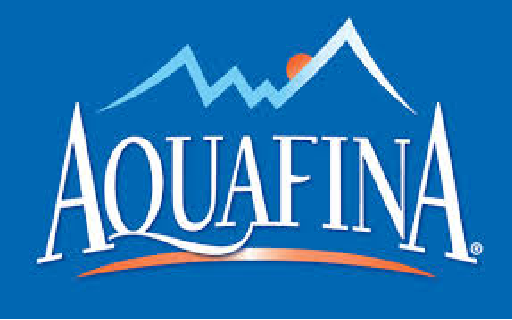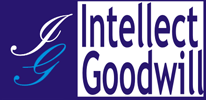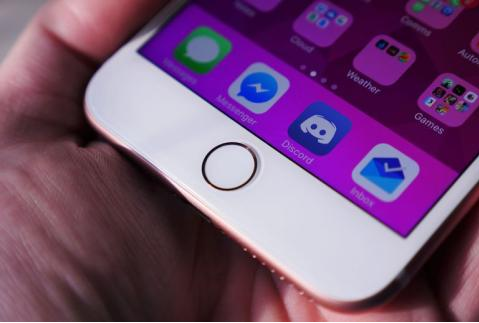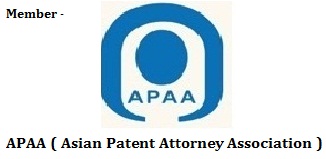Trump applies for trademark of his 2020 re-election slogan “Keep America Great” Donald Trump stopped an interview for some time and asked lawyer to register the phrase “Keep America Great” both with and without an exclamation point. Never straying far from his business roots, Trump has already submitted an application to trademark the slogan he plans to use for his 2020 re-election run: “Keep America Great.” Records from the United States Patent and Trademark Office show that the president applied on Wednesday — before he was even sworn into office — to trademark the phrase, both with and without an exclamation point.
also covers usage from bumper stickers to clothing to fundraising. The applicant was New York-based Donald J. Trump for President, Inc. The applications are pending, awaiting review by the trademark office.
Donald Trump told The Washington Post last week that he had chosen “Keep America Great!” as his re-election slogan. According to the newspaper’s report, he shouted for a lawyer in the middle of the interview. A lawyer came within two minutes, and was instructed to file a trademark for the phrase, the paper said. Trump then resumed the interview. Trump told the Post that he came up with his “Make America Great Again!” campaign slogan on November 7, 2012, the day after Republican Mitt Romney lost to Democrat Barack.
In China Apple loses trademark lawsuit over ‘iPhone’ name
Beijing, May 5: Apple Inc has lost a trademark lawsuit in China, with a court here allowing a leather goods- maker to sell wallets and handbags flashing the world’s biggest technology giant’s exclusive ‘iPhone’ name. The Beijing Municipal High People’s Court ruled in favour of Xintong Tiandi Technology (Beijing) limited, which sells a number of leather products such as smartphone cases and handbags under the name ‘IPHONE’, state media reported.
In 2002, Apple applied for the ‘iPhone’ trademark for its electronic goods in China, but it was not actually granted until 2013. Xintong Tiandi filed for its own ‘IPHONE’ trademark in China in 2007, the same year the first generation of Apple’s iPhone was launched in the US.
In order to obtain the exclusivity on the use of the ‘iPhone’ trademark in China, Apple first took the case to the Chinese trademark authority in 2012, but it failed as the agency claimed Apple could not prove the name ‘iPhone’ was a well-known brand prior to Xintong Tiandi’s registration in 2007. Apple then filed a lawsuit in a Beijing court. The court, however, ruled against it and Apple appealed to the Beijing Municipal High People’s Court. The court said the company did not sell the iPhone in China until 2009. The final judgement means Xintong Tiandi could continue to use the trademark to sell its products, state-run China Daily reported yesterday. Apple did not comment on the ruling. The ruling comes as Apple’s latest quarterly earnings showed a 13 per cent drop in revenue as sales of iPhones. China was a particular weak spot as the sales in China fell 26 per cent to USD 12.49 billion due to weak demand for iPhones. Xintong Tiandi confirmed the court ruling on its website and said the decision represented a victory for free consumer markets.
James Yan, a Beijing-based analyst at Counterpoint Technology Market Research said, “The failure of the trademark fight would not have a great impact on Apple’s brand and image but it might confuse consumers as they do not know whether these products are made by Apple or some producers copy Apple’s name when they are buying leather products embossed with the ‘IPHONE’ brand”. Zhu Dalin, an analyst at Beijing-based Internet consultancy Analyses International said the influence of Xintong Tiandi is very minor which would not pose a threat to Apple anyways as Apple mainly focuses on electronic devices such as smartphones and iPads.
New Delhi: Pepsico India Holdings Pvt Ltd has won a legal battle in the Delhi High Court over the trademark ‘Aquafina’ used for its packaged drinking water.

In Delhi High court , bench of Justice G S Sistani restrained PSI Ganesh Marketing from using “deceptively similar” trademark ‘Aqua Fies’ and causing infringement of rights in the trademark and copyright.
The court also awarded damages to the tune of Rs 5 lakh to Pepsico India on account of illegal activities of PSI Ganesh Marketing and ordered destruction of all the infringing goods within 4 weeks.
“On the basis of the documents placed on record, the plaintiffs have established that PepsiCo is the owner of the trademark, trade name, logo and label ‘Aquafina’ and the plaintiff have the exclusive right to use the same,” the court said.
“The impugned trademark of the defendants is deceptively similar to the PepsiCo’s trademark. The use of the word “Aqua Fies” by the defendants is likely to dilute the distinctive character of the plaintiffs trademark “Aquafina” and the same is likely to erode the goodwill and reputation of PepsiCo among its existing as well as potential customers in the market,” it said.
Pepsico said that the ‘Aquafina’ product was launched in India as early as 1999 and it is a unique word coined and exclusively adopted by it.
It also said that under section 17 of the Copyright Act, all rights in the label are owned by the plaintiffs and the said label is distinctive and is an original artistic work under section 2 (c) of the Copyright Act.

PayPal, an online payments system recognised worldwide, has appealed to the Indian authorities to refuse the trademark registration application from Paytm in India, citing similarities between the two company’s logos. The company in a notice has accused Paytm of using a logo that’s “deceptively and confusingly” similar to PayPal. PayPal in a notice said, “The impugned mark sought by the applicant [Paytm] is deceptively and confusingly similar to the opponent’s earlier trademark in as much as applicant has slavishly adopted the two-tone blue colour scheme of the opponent in its entirety.” PayPal has claimed that it has been using its trademark since 1999 and is registered in all countries where it operates, including India. The company has asked authorities to refuse the trademark application on the grounds of deceiving the consumers and similarity with PayPal’s logo. “The applicant is attempting to register a trade mark which is of such nature as to deceive the public and cause confusion. The registration of the impugned mark is therefore liable to be refused registration under the provisions […],” states the notice.
We’ve reached out to Paytm about its response to PayPal’s claims, and will update this article when we hear back.
PayPal has questioned the choice of colours made by Paytm for the logo. “The first syllable in each mark is in dark blue colour and the second syllable in a light blue colour. Further, both marks begin with the term “Pay” which consumers tend to remember more than the second syllable, and the marks are of similar length. These similarities cause a likelihood of confusion in the aggregate, especially considering the fame of the opponent’s earlier trade mark.”
Further, the notice raises questions on intention of the applicant, which is Paytm in this case. “There is no reason for the applicant to adopt the identical colours and colour scheme other than to take advantage of the reputation the opponent has built up into this combination in connection with its popular services. The applicant could have chosen from a sheer endless variety of colours and colour combinations.”
The company has also requested to refuse the application on the basis it may dilute the brand equity of PayPal. “Such adoption and/ or use of the impugned mark is likely to cause confusion and deception amongst the members of trade and public in that they will mistakenly believe that the services under the impugned mark originate from the opponent or that the applicant is affiliated or connected with the opponent, which is not the case. Further, such adoption and/ or use of the impugned mark is likely to dilute the brand equity of the opponent’s earlier trade mark.” (Courtesy – NDTV News ) .
Important Schemes of the Start-up-
· Startup Intellectual Property Protection (SIPP) –
· Provide financial assistance to protect Patent , Trade Marks .
· Atal Innovation Mission (AIM)-
· Establishment of incubators to nourish.
· Entrepreneurship promotion through Self-Employment and Talent Utilization (SETU).
Eligibility for Start-up Registration-
1. It must be an entity registered/incorporated as
a:Private Limited Company under the Companies Act.
b. Registered Partnership firm -Partnership Act, 1932; or
c. Limited Liability Partnership – Limited Liability Partnership Act, 2008- LLP.
2. Five years must not have elapsed from the date of incorporation /
registration.
3. Annual turnover (as defined in the Companies Act, 2013) in any
preceding financial year must not exceed Rs. 25 crore .
3. Startup must be working towards innovation, development,
deployment or commercialisation of new products, processes or services driven by technology or intellectual property.
4. The Start-up must aim to develop and commercialise:-
a) a new product or service or process; or
b) a significantly improved existing product or service.
5. The Start-up must not merely be engaged in:
a. developing products or services or processes which do not have potential for commercialisation or
b. undifferentiated products or services or processes; or
c. products or services or processes with no or limited incremental value for customers or workflow .
6. The Start-up must not be formed by splitting up, or reconstruction,
of a business already in existence.
7. The Startup has obtained certification from the Inter-Ministerial
Board, setup by DIPP ( Department of Industrial Policy and Promotion ) to validate the innovative nature of the business, and
a. be supported by a recommendation (with regard to innovative nature of business), in a format specified by DIPP, from an incubator established in a PG college in India; or
b. be supported by an incubator which is funded (in relation to the project) from GoI or
c. be supported by a recommendation (with regard to
innovative nature of business), in a format specified by DIPP, from an incubator recognized by GoI; or
d. be funded by an Incubation Fund/Angel Fund/Private Equity Fund/Accelerator/Angel Network duly registered with SEBI that endorses innovative nature of the business; or
e. be funded by the Government of India as part of any specified scheme to promote innovation; or
f. have a Patent granted by the Indian Patent in areas affiliated with the nature.
Process flow to get Registration of Start-up under Govt. of India-
Key Point of Start-ups-
A. Single Window clearance even through Mobile App.
B. Start-up Intellectual Property Protection (SIPP)
C. Tax Exemption .
D. Providing Funding Support through a Fund of Funds with a Corpus of INR 10,000 cr .
E. Relaxation in Labour & Environmental Laws .
F. Self Certification Complacencies .
G. Innovation Hubs under Atal Innovation mission
H. School Innovation Program – 5 lakh School /10 lakh Student .
I. Faster Exit for Start-ups.
A. Single Window clearance even through Mobile App.-
B. To serve as the single platform for Startups for interacting with Government and Regulatory Institutions for all business needs & info exchange
C. In order to commence operations, Startups require registration with relevant regulatory authorities.
D. a checklist of required licenses covering labour licensing, environmental clearances etc. be made available on portal.
B. Start-up Intellectual Property Protection (SIPP)-
Appointment of Facilitator –Govt. of India has appointed Facilitator to help startup for –
Patent – for Drafting , filling , handling all matter to protect the Patents and Inventions of the new start-ups in India .
Trade Mark – for Drafting , filling , handling all matter to protect the trade marks and brand names .
Fees of the facilitator and Govt filling fee reimburse by the Govt. of India.
Subsidy up to 80 % –
For Patent and Trade mark – subsidy up to 80 % is granted by the Govt. of India to protect trade mark & Patent filed by the Start-ups to protect the IPR’s of the Start-ups for any number of IPR .
This project is for one year as pilot basis only.
C. Tax Exemption-
Exemption From Capital Gains Tax-
Currently investments by venture capital Funds in startup are exempt from this law.
Income tax exemption to startups announced for 3 years.
startup initiatives are exempted from income-tax for a period of 3 year. This fiscal exemption shall facilited growth of business and meet the working capital requirements during the initial years of operations.
Tax exemption on investments above fair market value.
F. Providing Funding Support through a Fund of Funds with a Corpus of INR 10,000 cr-
G. Relaxation in Labour and Environmental Laws .
H. Objective of compliance remine based on self certification is to reduce the regulatory burden-
I. Labour laws:
The Building and Other Construction Workers (Regulation of Employment & conditions of Service ) Act. 1996
The Inter-state Migrant workmen (Regulation of employment & conditions of Service ) Act . 1979
The payment of Gratuity Act. 1972
The Contract Labour (Regulation and Abolition ) Act.1970
The Employees Providen funds and Miscellancous Provision Act. 1952
The Employees state Insurance Act. 1948.
J. Environment Laws
The Water (prevention & Control Of Pollution ) Act.1974
The Water (prevention & Control Of Pollution ) Cess (Amendment) Act. 2003
The Air (prevention & Control Of Pollution ) Act. 1981
G. Innovation Hubs- Atal Innovation mission (AIM).
Self-Employment and Talent Utilization (SETU) –
Innovation promotion: to provide a platform where innovative ideas are generated.
Setting up of 35 new incubators in institutions.
set up scale up 31 centres.
Setting-up 13 startup centers Annual funding supports of INR 50 lakhs (shared 50-50by DS and MHRD) shall be provided for three years.
Setting-up scaling-up 18 Technology business incubators (TBIs ) at NITs IITs/IIMS ect.
Promote entrepreneurship in biotechnology.
Five new bio cluters. 50 new bio incubators. 150 technology transfer officer and 20 boi connect offices will be established.
H. School Innovation Program – 5 lakh School /10 lakh Student .
Innovation core programs for students in 5 lakh schools.
NIDHI : National initiated for Developing and unique Innovations , instituted through Innovation and Entrepreneurship Development Centers (IEDCs) to support and award INR 10 lakhs to 20 student innovations from IEDSc.
Uchhattar Avishkar yojana: A joint MHRD-DST scheme whice has carmarked INR 250 crore per annum .The funding towards this research will be 50% contribution from MHRD. 25% from DST and 25% from industry .
J. Faster Exit for Start-ups.
Contact for more details and consultation –






